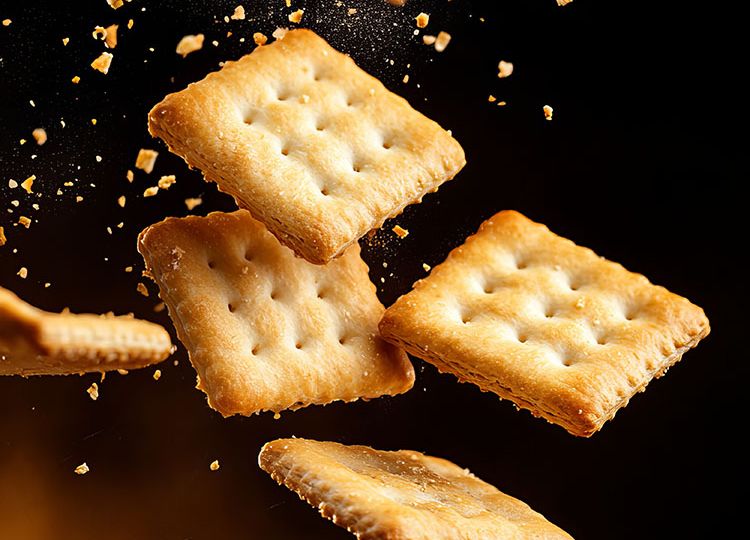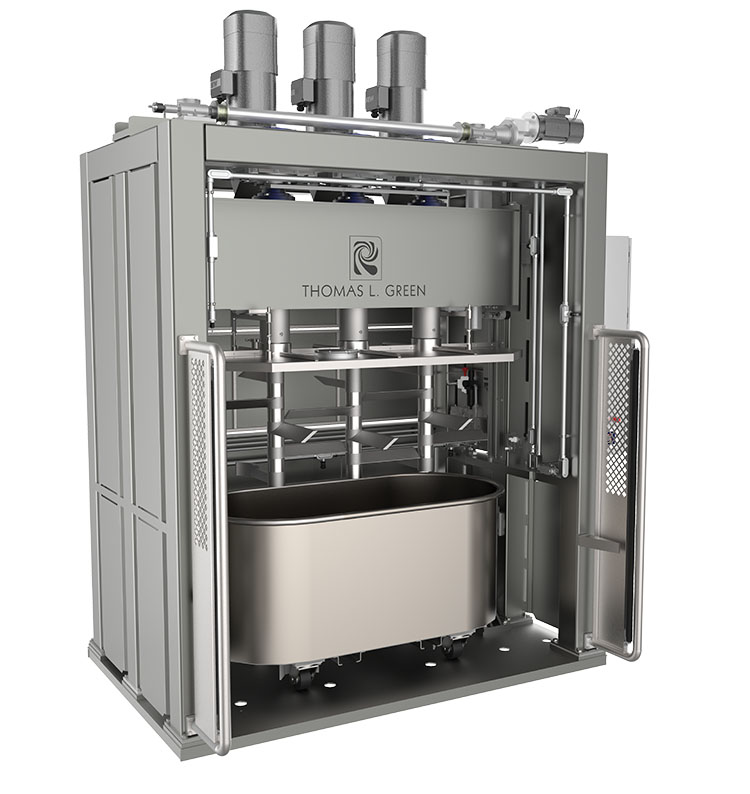
Two-stage batch mixing brings multiple advantages to industrial-scale baking. Set up with distinct sequences, each with its own contribution to the dough development, it helps create specialty products with better texture and improved flavor.
Two-stage batch mixing is especially suited to long-fermentation doughs, where structure and flavor are needed. In a tub or trough that serves as a mixing bowl, ingredients are first mixed at slower speeds, to allow gluten development. The controlled fermentation process of the premixed dough can now begin, with the dough never leaving the container. Eliminating the need to transfer it also means that there are no contamination risks associated with this process.
The second stage of the mixing process begins when fermentation is completed; this time, at higher speeds, to help the gluten structure fully develop and obtain dough with the desired characteristics. These steps make the process especially beneficial for the production of crackers, among other specialties, on an industrial scale. Once fully mixed, the dough is either manually or automatically transferred to the next processing stages – either sheeting, extrusion, or forming.
Doughs obtained by two-stage mixing have a better texture, with the process revolving around fermentation. At the same time, allowing natural fermentation to develop eliminates the need for conditioners – Sodium Metabisulfite (SMS) or other additives, which is great news, not just for labeling statements, but also for enhanced product flavor.

Crackers and more
The Thomas L. Green Vertical Spindle Mixer, developed by Reading Bakery Systems, was designed to optimize the production of dough, particularly fermented types, but also beneficial for unfermented and rotary molded doughs. They are available in several capacities, usually ranging from 500 kg to 1,200 kg. Multiple mixers can be used to support the same production line.
“It is a high-quality system suitable for cracker, semi-sweet, and rotary molded doughs, making it a flexible option. It can simplify ingredient feed, particularly for lower throughput lines with manual ingredient feed,” highlights David Welch, European Sales Manager, RBS. The Spindle Mixers consistently produces batches of dough with the same characteristics, for all the specialties. They can mix doughs in under 10 minutes, even as fast as 3-5 minutes, when running cracker dough.
The technology is regularly updated. The most recent designs of the Spindle Mixer have new safety and sanitation features, to meet current market priorities. “The design also helps ensure that the dough does not become contaminated with non-food medium,” Welch explains.
A recipe-driven machine, the Vertical Spindle Mixer offers complete flexibility regarding ingredient feed order and timing. Through its recipe function, pre-saved mixing cycles can be used. Key variables making up presets include blade rotation speeds and time. Smart features ensure streamlined mixing for each batch: “The addition of RFI tags means that the mixer knows what bowl is present and the mix stage procedure that is required,” Welch says.
David Welch, Europe Sales Manager, RBS
The mixer is built with independent gearboxes for each spindle mixing tool. This design brings several benefits, including increased hygiene, improved machine protection and greater product flexibility. Having independent gearboxes eliminates the requirement for drive train components, which require lubrication and have a high risk of product contamination. In addition, independent gearboxes also contribute to the reliability of the equipment. “Each spindle can be monitored and tracked to ensure no blade collision occurs,” the specialist adds. The mixing process can also be precisely fine-tuned by controlling each mixing blade independently. In this way, the outer and inner blades can run at different speeds, resulting in improved mixing and homogeneous dough structure.
The mixing paddles are configured to generate sufficient dough movement (or turbulence) to ensure a homogeneous mix, in a sturdy design developed by RBS over the years. The spindle paddle shafts are supported on spherical roller bearings, which are designed to withstand radial and axial loading and are able to self-align into the correct position. All the forces at play are thoroughly accounted for, to ensure accuracy and stability, including the action of inserting and removing the blades from the dough and the rotation of the mixing blades as they push through the dough.
Over time, consistency and repeatability ensure not only that the product quality is guaranteed, but also that the system operates within the intended specifications, for longer, and with fewer unwanted interruptions. It’s all a matter of planning.


